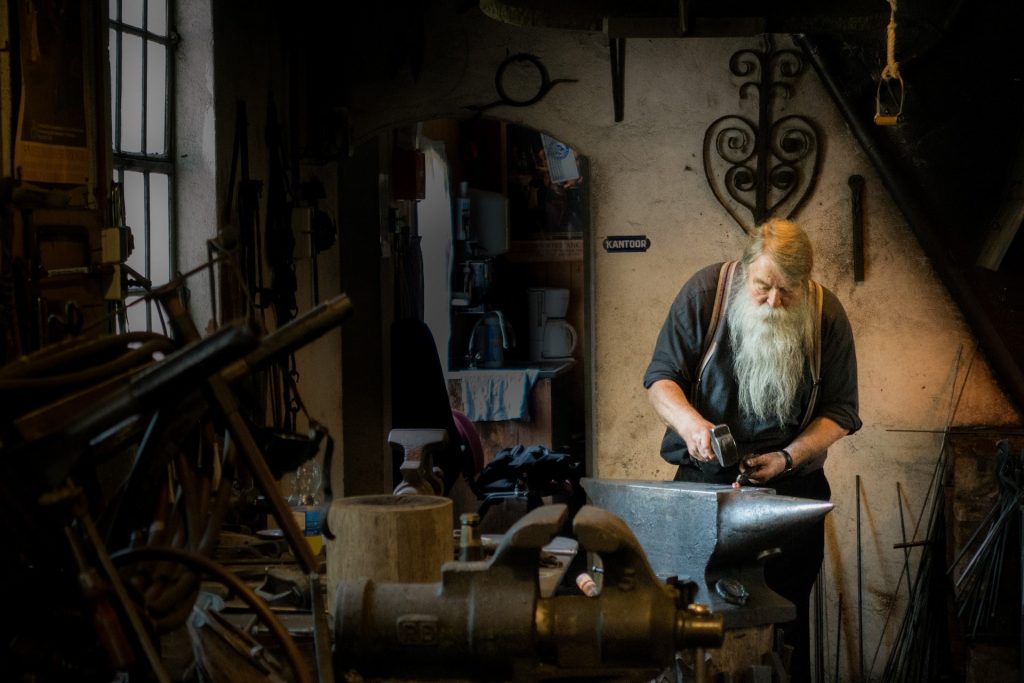
The rich tapestry of artisan heritage forms an integral part of our global cultural identity, offering a window into the past and a mirror to the present. In every corner of the world, skilled craftsmen and women have long been the bearers of tradition, meticulously creating objects that are not only functional but also deeply imbued with symbolic meaning and aesthetic value. These artisans, through their dedication and skill, provide a tangible link to the history and traditions of their communities. From the intricate weaving patterns of South American textiles to the delicate ceramics of East Asia, each piece tells a story of cultural significance and personal craftsmanship. This exploration into the world of artisan heritage not only celebrates these timeless skills but also highlights the importance of preserving such practices in a rapidly modernizing world. As we delve into the historical significance of crafts, we honor the hands that have shaped and maintained the cultural fabric of societies for centuries.
Historical Significance of Crafts
The realm of traditional crafts is a testament to the enduring legacy of human creativity and the pursuit of exceptional craftsmanship. Each crafted item is a narrative, encapsulating not just the skill of its maker but also the cultural and historical context in which it was created. This exceptional craftsmanship serves as a bridge connecting generations, allowing us to experience and appreciate the ingenuity and resourcefulness of our ancestors. In many cultures, crafts were more than mere objects; they were symbols of status, markers of significant life events, and even mediums of storytelling.
For instance, the intricate carvings on a Native American totem pole or the detailed patterns of African tribal masks are not just displays of artistry; they embody the beliefs, myths, and social structures of their respective societies. By understanding these crafts, we gain insights into the societal norms, religious beliefs, and everyday life of past civilizations, making these crafts invaluable pieces of a historical puzzle that continues to intrigue and educate.
Materials and Techniques in Traditional Crafts

The diverse array of materials and techniques used in traditional crafts highlights the ingenuity and adaptability of artisans throughout history. These craftspeople have always been masters at utilizing available resources, transforming them into objects of beauty and function. The variety of materials reflects not only the geographical and environmental conditions but also the cultural values and artistic visions specific to each region.
Key materials and techniques include:
- Wood: Used for carving, joinery, and inlay work.
- Clay: Essential for pottery and ceramics.
- Metals: Including gold, silver, and copper for smithing and jewelry.
- Fibers: Such as cotton, wool, and silk for weaving and textile arts.
- Natural Dyes: Extracted from plants and minerals for coloring fabrics and artworks.
- Stone: For sculpting and masonry.
Each material demands specific skills and methods, shaping the unique character of the crafts produced. For instance, the pottery techniques vary significantly from the coiling and firing methods used in Native American ceramics to the delicate wheel-thrown porcelain of China.
Resources like the Smithsonian’s craft collection offer an in-depth look at these materials and methods, showcasing a wide array of crafts from different cultures. Understanding these techniques not only enriches our appreciation of these art forms but also highlights the importance of preserving these skills, as they represent a fundamental aspect of cultural heritage and human creativity.
Global Craftsmanship Examples

The world is a mosaic of craftsmanship, with each culture contributing its unique artistry and techniques. In Japan, the delicate art of Kintsugi, where broken pottery is mended with gold, teaches a philosophy of embracing flaws and imperfections. Italian glassblowers in Murano create ethereal glass pieces, a skill honed over centuries and guarded with great pride. In the Middle East, the ancient practice of carpet weaving continues to be a symbol of intricate design and cultural storytelling. Indian artisans, known for their vibrant textiles and detailed metalwork, showcase skills passed down through generations.
Africa, with its rich tapestry of tribes, offers a kaleidoscope of crafts from beaded jewelry to hand-woven baskets, each telling a story of the land and its people. These examples represent just a fraction of the global diversity in craftsmanship. Each region’s distinct materials, techniques, and styles not only highlight the artistic capabilities of its people but also serve as a cultural identifier, preserving a sense of heritage and continuity in an ever-changing world. This global panorama of artisanal excellence underscores the universal human urge to create and express, bridging gaps between different cultures and eras.
Challenges in Preservation of Crafts
The preservation of traditional crafts faces several challenges in the contemporary world. These hurdles are not only about keeping the skills alive but also about ensuring their relevance in modern society.
Key challenges include:
- Globalization: The widespread availability of mass-produced items often overshadows unique, handmade crafts.
- Technological Advancement: Modern technology can sometimes replace traditional methods, leading to a loss of unique skills.
- Economic Viability: Many artisans struggle to compete economically, making it difficult to sustain their craft as a livelihood.
- Cultural Changes: As societies evolve, interest in traditional crafts can diminish, leading to a loss of skilled artisans.
Organizations like the American Craft Council play a crucial role in addressing these challenges. They not only promote the importance of crafts but also support artisans through various initiatives.
These efforts are vital to ensure that these age-old practices are not just preserved as relics of the past but continue to evolve and thrive in the modern context, maintaining their relevance and appeal to new generations. The sustainability of traditional crafts depends on a delicate balance between preserving ancient techniques and adapting to contemporary needs and tastes.
Impact on Local Communities

Traditional crafts are much more than a means of artistic expression; they significantly influence the socioeconomic fabric of local communities. These crafts often serve as a primary source of income, providing livelihoods for entire families and communities. In many regions, artisanal work is a community effort, fostering strong bonds and a sense of collective identity among the members. Moreover, these crafts contribute to local economies by attracting tourism, which can lead to increased recognition and appreciation of the culture.
Additionally, the principles and values embedded in these crafts often promote sustainable and environmentally friendly lifestyle choices. The use of local materials and traditional methods emphasizes a harmonious relationship with nature, setting an example for sustainable living practices. This link to lifestyle choices highlights the broader influence of such practices beyond mere economic benefits. By supporting these crafts, communities not only preserve their cultural heritage but also promote values of sustainability and ecological awareness, essential in today’s world. The preservation and promotion of traditional crafts thus play a critical role in the cultural and economic well-being of communities worldwide.
Future of Tradition
In conclusion, traditional crafts represent a vital link between the past and the future. As we move forward, it is imperative to not only preserve these age-old techniques but also adapt and innovate them for contemporary relevance. The survival and thriving of traditional crafts depend on our collective efforts to value, support, and integrate them into modern life. By doing so, we ensure that the rich tapestry of human creativity and cultural diversity is passed on to future generations, enriched and alive.







